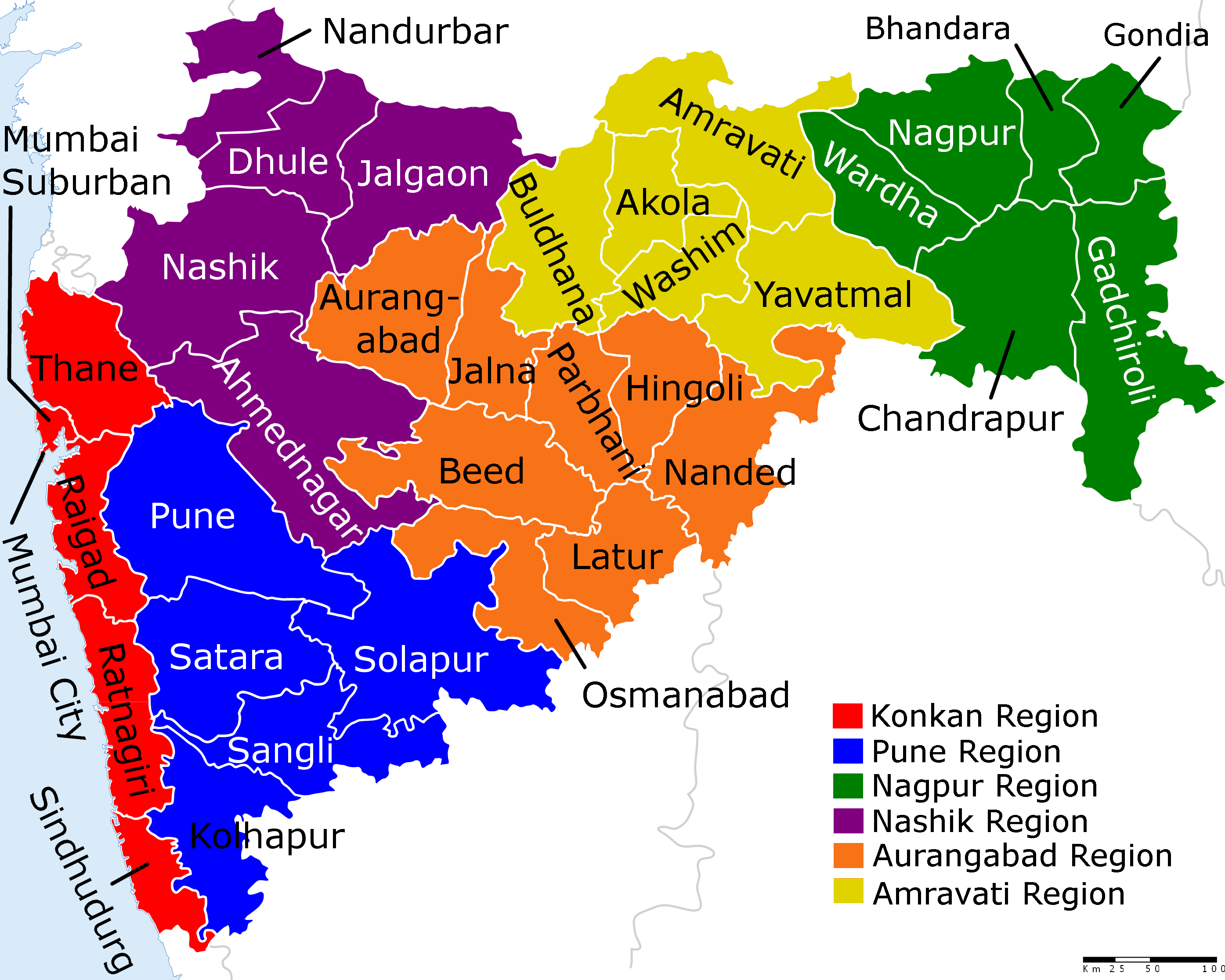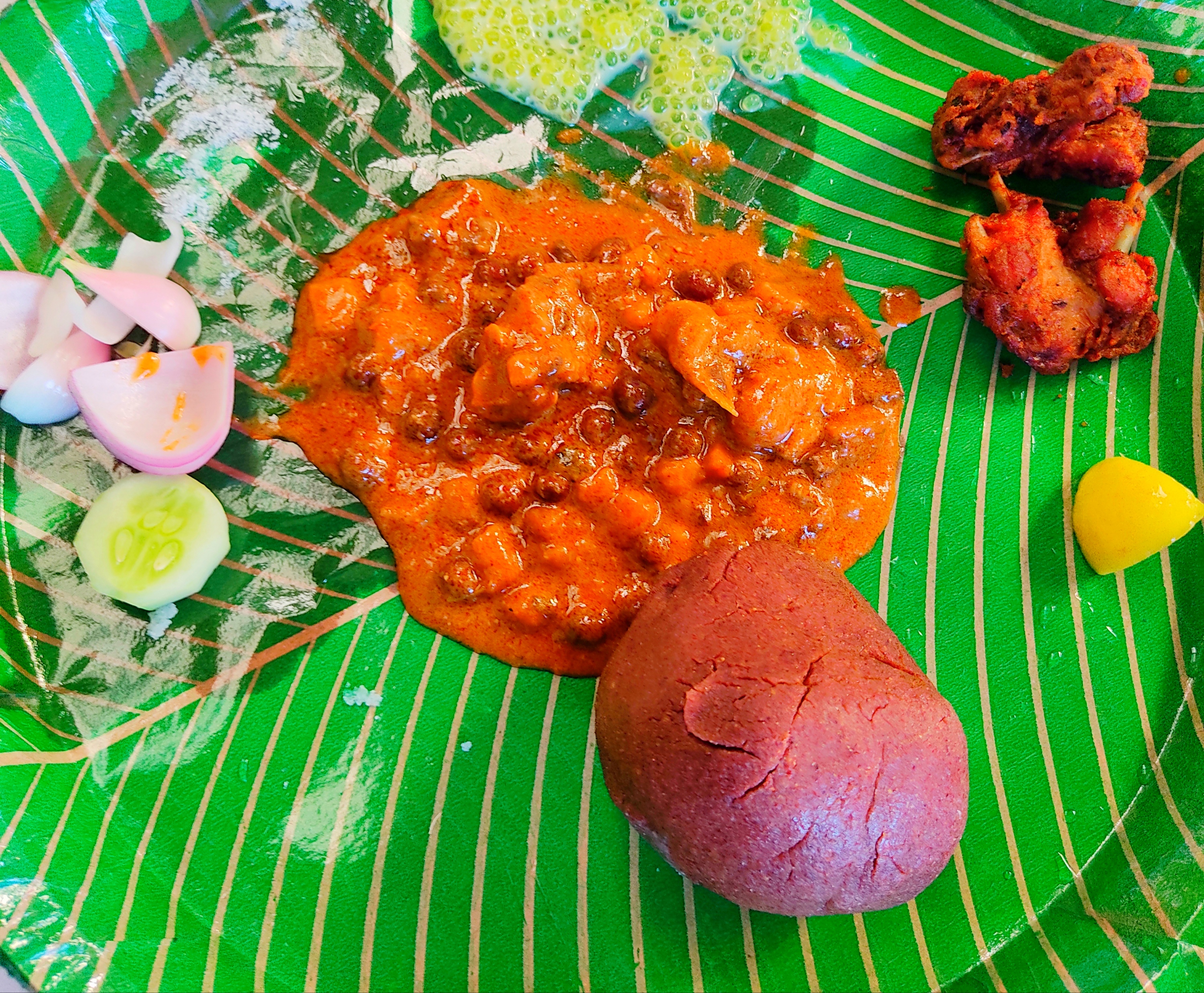|
Jhunka
Jhunka or zunka is a gram flour porridge or a gram flour curry, similar to polenta. It is a traditional Indian dish prepared in Maharashtra, North Karnataka, and Goa. It is also known by the name of pithla or pithle. When served with bhakri, the dish is referred to as ''jhunka bhakar'' or ''pithla bhakri''. Pithle is also known as ''chun'' in the Vidarbha region of Maharashtra. Jhunka with bhakar is considered the quintessential peasant fare of Maharashtra. It is accompanied by ''kharda'' or '' thecha''. In recent times, ''pithla bhakri'' has become an inseparable part of treks to mountain forts such as Sinhagad. Zunka/pithla is considered a nutritious food because of its balanced content of fiber, protein, carbohydrates and potassium. Preparation Jhunka is made by mixing gram flour (''besan'') with water to form a semi-solid paste. It is then sauteed in oil with assorted ingredients like green chillies, red chilli powder, turmeric, salt, fried onions, mustard seeds, ginger, ... [...More Info...] [...Related Items...] OR: [Wikipedia] [Google] [Baidu] |
Maharashtrian Cuisine
Maharashtrian or Marathi cuisine is the cuisine of the Marathi people from the Indian state of Maharashtra. It has distinctive attributes, while sharing much with other Indian cuisines. Traditionally, Maharashtrians have considered their food to be more austere than others. Maharashtrian cuisine includes mild and spicy dishes. Wheat, rice, ''jowar'', ''bajri'', vegetables, lentils and fruit are dietary Staple food, staples. Peanuts and cashews are often served with vegetables. Meat was traditionally used sparsely or only by the well-off until recently, because of economic conditions and culture. The urban population in metropolitan cities of the state has been influenced by cuisine from other parts of India and abroad. For example, the South Indian dishes ''idli'' and ''Dosa (food), dosa'', as well as Indian Chinese cuisine, Chinese and Western dishes such as pizza, are popular in home cooking and in restaurants. Distinctly Maharashtrian dishes include ''ukdiche modak'', , ''kan ... [...More Info...] [...Related Items...] OR: [Wikipedia] [Google] [Baidu] |
Gram Flour
Besan or gram flour is a pulse flour made from chana dal or chickpea flour (split Bengal gram) or brown/ ''kaala chana'', a chickpea. It is a staple ingredient in the cuisines of the Indian subcontinent, including Indian, Bangladeshi, Burmese, Nepali, Pakistani, Sri Lankan, Caribbean, and Lunigiana cuisines. Characteristics Gram flour contains a high proportion of carbohydrates, higher fiber relative to other flours, no gluten, and a higher proportion of protein than other flours. Dishes The Indian Subcontinent and the Caribbean Gram flour is in popular use in the Indian subcontinent and the Caribbean, where it is used to make the following: In Andhra Pradesh, it is used in a curry with gram flour cakes called Senaga Pindi Kura () and is eaten with Chapati or Puri, mostly during winter for breakfast. Chila (or chilla), a pancake made with gram flour batter, is a popular street food in India. Southeast and East Asia Gram flour, which is called ''pe hmont'' (ပဲ� ... [...More Info...] [...Related Items...] OR: [Wikipedia] [Google] [Baidu] |
Bhakri
Bhakri () is a round flatbread often eaten in the cuisines of the states of Maharashtra, Gujarat, Rajasthan, and Karnataka in India. Bhakri is prepared using jowar or bajra, which is coarser than a regular wheat chapati. Bhakri can be either soft or hard in texture, unlike khakhra in respect to hardness. Grains and variants Different types of millet are the common grains used for making bhakris. These millet bhakris are popular in the Deccan plateau regions of India (Maharashtra and Northern Karnataka) as well as the semi-arid regions of Rajasthan. In the coastal Konkan and Goa regions of western India rice flour is used for making bhakri. # Jowar bhakri – Jowar bhakris are the most common type of bhakri. The dough is prepared by mixing jowar flour with hot water and then flattened by hand. # Bajra bhakri – Bajra bhakris are mainly prepared in winter, especially near the festival of Sankranti. The preparation is similar to jowar bhakris. # Makai bhakri – Cornmeal bhakr ... [...More Info...] [...Related Items...] OR: [Wikipedia] [Google] [Baidu] |
Indian Cuisine
Indian cuisine consists of a variety of regional and traditional cuisines native to the Indian subcontinent. Given the diversity in soil, climate, culture, ethnic groups, and occupations, these cuisines vary substantially and use locally available spices, herbs, vegetables, and fruits. Indian food is also heavily influenced by religion, in particular Hinduism and Islam, cultural choices and traditions. Historical events such as invasions, trade relations, and colonialism have played a role in introducing certain foods to India. The Columbian exchange, Columbian discovery of the New World brought a number of new vegetables and fruits. A number of these such as potatoes, tomatoes, Chili pepper, chillies, peanuts, and guava have become staples in many regions of India. Indian cuisine has shaped the history of international relations; the spice trade between India and Europe was the primary catalyst for Europe's Age of Discovery. Spices were bought from India and traded around ... [...More Info...] [...Related Items...] OR: [Wikipedia] [Google] [Baidu] |
South Asian Cuisine
South Asian cuisine includes the traditional cuisines from the modern-day South Asian republics of Bangladesh, India, Maldives, Nepal, Pakistan and Sri Lanka, also sometimes including the kingdom of Bhutan and the emirate of Afghanistan. Also sometimes known as Desi cuisine, it has been influenced by and also has influenced other Asian cuisines beyond the Indian subcontinent. Staples and common ingredients Chapati, a type of flat bread, is a common part of meals to be had in many parts of the Indian subcontinent. Other staples from many of the cuisines include rice, roti made from atta flour, and beans. Foods in this area of the world are flavoured with various types of chilli, black pepper, cloves, and other strong herbs and spices along with the flavoured butter ghee. Ginger is an ingredient that can be used in both savory and sweet recipes in cuisines from the subcontinent. Chopped ginger is fried with meat, and pickled ginger is often an accompaniment to boiled rice. Ginge ... [...More Info...] [...Related Items...] OR: [Wikipedia] [Google] [Baidu] |
Hindu Cuisine
Hindus (; ; also known as Sanātanīs) are people who religiously adhere to Hinduism, also known by its endonym Sanātana Dharma. Jeffery D. Long (2007), A Vision for Hinduism, IB Tauris, , pp. 35–37 Historically, the term has also been used as a geographical, cultural, and later religious identifier for people living in the Indian subcontinent. It is assumed that the term ''"Hindu"'' traces back to Avestan scripture Vendidad which refers to land of seven rivers as Hapta Hendu which itself is a cognate to Sanskrit term ''Sapta Sindhuḥ''. (The term ''Sapta Sindhuḥ'' is mentioned in Rig Veda and refers to a North western Indian region of seven rivers and to India as a whole.) The Greek cognates of the same terms are "''Indus''" (for the river) and "''India''" (for the land of the river). Likewise the Hebrew cognate ''hōd-dū'' refers to India mentioned in Hebrew BibleEsther 1:1. The term "''Hindu''" also implied a geographic, ethnic or cultural identifier for people ... [...More Info...] [...Related Items...] OR: [Wikipedia] [Google] [Baidu] |
Karnataka Cuisine
Dating back to the Iron Age, Karnataka’s cuisine is said to be one of the oldest surviving in the country. Karnataka cuisine includes the cuisines of the different regions and communities of the Indian state of Karnataka, namely, Uttara Karnataka cuisine, Dakshina Karnataka cuisine, Udupi cuisine, Mangalurean cuisine, Kodava cuisine, Saraswat cuisine, Mangalurean Catholic cuisine and Navayath Muslim cuisine. * Avalakki - Flattened parboiled rice cooked with spices. In Karnataka avalakki can be eaten with majjige or Gojju * Raagi Mudde -It is very popular with the rural Karnataka. Eaten this with Bassaaru and Upasaaru. *Upasaaru - Simple sambar. It is prepared with salt, water, grams, vegetables and some chillies. * Bassaaru - Prepared by using decanted water of dal and greens * Mysore Pak - Very popular sweet dish which is prepared by using gram flour and ghee * Bisi Bele Bath- is a spicy rice based dish. It is originated in Mysore, Karnataka and from there sprea ... [...More Info...] [...Related Items...] OR: [Wikipedia] [Google] [Baidu] |
Roti
Roti is a round flatbread originating from the Indian subcontinent. It is commonly consumed in many South Asian, Southeast Asian, Caribbean, East African, and Southeast African countries. It is made from stoneground whole-wheat flour, known as '' atta'', combined into a dough with added water. Its defining characteristic is that it is unleavened. '' Naan'' from the Indian subcontinent, by contrast, is a yeast-leavened bread, as is '' kulcha''. Like breads around the world, roti is a staple accompaniment to other foods. Etymology The word ''roti'' is derived from the Sanskrit word ''roṭikā'', meaning "bread". Types # ''Makki roti'': corn flour roti served with sarson ka saag, a classic dish of Punjab. # Akki roti: Rice flour roti with grated vegetables and spices, served with chutney, a famous dish of Karnataka. # Thalipeeth roti: Maharashtrian roti is made with bajra, jowar, rice, chickpea, and spices, served with yogurt or ghee, also popular in Karnataka. # Missi ... [...More Info...] [...Related Items...] OR: [Wikipedia] [Google] [Baidu] |
Sinhagad
Sinhagad (''Lion's Fort'') is an ancient hill fortress located at around 28 km southwest of the city of Pune, India. Previously known as ''Kondhana'', the fort had been the site of many battles, most notably the Battle of Sinhagad in 1670. The fort is a popular weekend destination for the residents of Pune. A road directly leads up to the summit of the fort. Trekking enthusiasts can get access to the summit from the base of the fort. The trek involves a one-way walk of 2.7 km (1.6 miles) over which the walker gains about 600 m (1950 feet) in elevation. Shared taxi services to the base as well as the summit are also available. Layout Sinhagad was strategically built to provide natural protection from the enemies due to its very steep slopes. There are two gates to enter the fort named Pune darwaja and Kalyan darwaja. Pune darwaja is towards north east while the Kalyan darwaja is towards the southeast. Perched on an isolated cliff of the Bhuleswar range in the ... [...More Info...] [...Related Items...] OR: [Wikipedia] [Google] [Baidu] |






